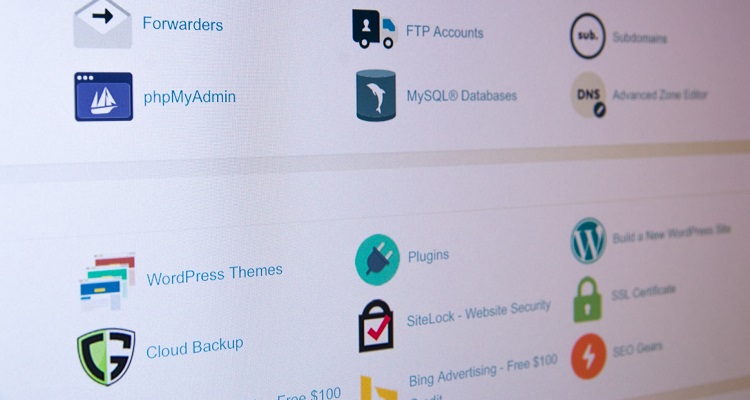
Building customer trust in eCommerce websites is a challenge many online businesses face. Yet, it’s a space no business today can afford to ignore, with a global retail value estimated to hit $6.3 trillion by 2024.
eCommerce isn’t new, and customers today are increasingly educated on finding the best products they want online. Thanks to many merchants joining the race for online sales, the challenge shifts towards convincing customers that you’re the best choice.
8 Actionable Ways to Build Customer Trust in eCommerce
To address this challenge, here are some ways you can inspire trust;
1. Build a Strong Foundation

Before moving onto more granular details, the first thing that needs attention is website performance. Web page loading speed directly affects conversion rates. Imagine hopping onto an online store, and the product pages take forever to load. Visitors will simply head elsewhere.
Even worse would be an eCommerce website that fails to load – perhaps due to server outages or limited resources failing to cope with traffic volume. Customers aren’t likely to trust such a website with their payment details.
If you’re already running a site, check to see if it meets Google speed guidelines. There are free tools such as the Website Speed Checker by Bitcatcha you can use to get this information quickly.
2. Write Compelling Descriptions
It’s tempting to cut and paste the information from a product description, but that’s what the rest of the world is doing. Building a compelling product description is more than convincing a potential buyer – it’s an opportunity.
Showcase your experience in the product description and go further than the basic “this is a (fill in the blank).” Giving customers ideas of how the item applies to practical or any other use can tip things in your favor.
Make sure your descriptions are accurate and consistent. Making a mistake here is likely to raise questions that turn off your audience.
Also read: What Is The Best Time ⌛ and Day 📅 To Post On Instagram? It Is Definitely NOT ❌ Sunday (A Complete Guide)
3. Ensure Proper Compliance
Dealing with customer payments today can be a little tricky. You need to meet many compliance regulations depending on the jurisdiction, payment methods, or privacy requirements. Failing to address these compliance issues is a surefire way of losing customer confidence.
One clear example is the General Data Protection Regulation, or GDPR. This regulation helps ensure websites handle user data properly. Failing to comply with GDPR can be seen as a lack of interest in your customers’ digital privacy.
4. Show Testimonials and Trust Seals

Testimonials and trust seals address two different spectrums in customer trust. Trust seals apply to various areas of your eCommerce website and help instill confidence through familiar branding.
For example, you can display a trust seal provided by a Secure Sockets Layer (SSL) provider like GeoTrust or Verisign anywhere. That assures customers that you’re website is using professional SSL certificates to protect their data.
If you’re using PayPal as a payments processor, there’s also a PayPal Verified seal you can display on the checkout page.
Testimonials are a little trickier, especially if you’re new and don’t yet have any customer testimonials. If you do, displaying what others are saying is a good way of building trust. If not, consider placing testimonials or mentions from trusted sources.
Also read: How To Void A Check? A Step-By-Step Guide (In The Right Way)
5. Display Prices and Fees Clearly
Some eCommerce merchants may be afraid that steep fees will turn customers away. However, it’s better to be transparent about all fees so potential buys won’t end up with nasty surprises. Slapping on hidden charges is a surefire way of garnering negative reviews that can spiral out of control.
Always ensure a page somewhere along the checkout process displays a price breakdown and a final total. Preferably, the earlier you show this page, the better, as users can make up their minds early on whether they’re willing to spend time trying to make the purchase.
6. Stay in Touch After a Purchase
Product shipping isn’t always the fastest thing, especially if you cater to a worldwide audience. Some customers get a little antsy at the thought of paying for something that isn’t in their hands the minute cash leaves their wallet.
To help address this issue, make sure you keep customers updated regarding what’s happening on your end. Notifications along the various steps can build greater confidence that what they’ve paid for is along the way.
Also read: The Top 10 Digital Process Automation (DPA) Tools
7. Always be Reachable
Websites work around the clock, and people shop online at all times. Ideally, you should be able to respond to queries or requests all along the way. Being reachable is one of the golden rules of eCommerce, especially with support channels.
Options are available even if you aren’t able to field a complete customer support team. For instance, you could implement a Chatbot configured to provide first-line assistance to customers. If that fails to address the problem, then it can be escalated to your support team.
There are many excellent Chatbot in the market for a variety of tasks. Some of them can do equally well at anything from sales assistance to customer support. Here are some you can check out if you need ideas;
- Chatfuel
- WP-Chatbot
- ManyChat
8. Build a Great Customer Experience Journey
Website owners tend to place a lot of focus on how pretty their website looks. While this is important from an aesthetic viewpoint, the customer journey is even more so. Customers need clarity and simplicity, and allowing them to quickly find the right product and nudge them towards the purchase is vital.
Preferably, you should plan the customer journey along with your website design. All is not lost, though, If you’ve already built the website. Some add-on elements can help you improve the customer journey, such as implementing 1-click checkout or analyzing data to place the right products on your front page.
Customers that have a smooth experience on your website are more likely to trust it – and share that trust with their friends.
Don’t forget that the customer journey doesn’t end once the sale is complete. Sending customers periodic discount coupons is one way of building a continuing relationship that will last a lifetime.
Also read: Top 9 WordPress Lead Generation Plugins in 2021
Final Thoughts
Yet as you can see, having hundreds of product reviews isn’t the only move you can make towards establishing trust.
It’s also important to understand that trust is something hard to win yet easy to lose. Once you’ve got the system working, remember to review and reinforce the elements put into play. This review can help you take advantage of new techniques or improve existing ones.
Top 10 News
-
01
10 Exciting iPhone 16 Features You Can Try Right Now
Tuesday November 19, 2024
-
02
10 Best Anatomy Apps For Physiologist Beginners
Tuesday November 12, 2024
-
03
Top 10 Websites And Apps Like Thumbtack
Tuesday November 5, 2024
-
04
Top 10 Sites Like Omegle That Offer Random Video Chat
Monday October 21, 2024
-
05
Entrepreneurial Ideas To Make 5K In A Month (10 Realistic Wa...
Monday October 7, 2024
-
06
[10 Best] Cash Advance Apps Like Moneylion And Dave (No Cred...
Friday September 20, 2024
-
07
Top 10 Richest Person In The World
Tuesday August 27, 2024
-
08
Top 10 Unicorn Startups In The World (2024-25)
Monday August 26, 2024
-
09
Top 10 IT Companies In The World By Market Cap
Thursday August 22, 2024
-
10
[10 New] Best OnionPlay Alternatives To Stream TV Shows And ...
Tuesday June 11, 2024







